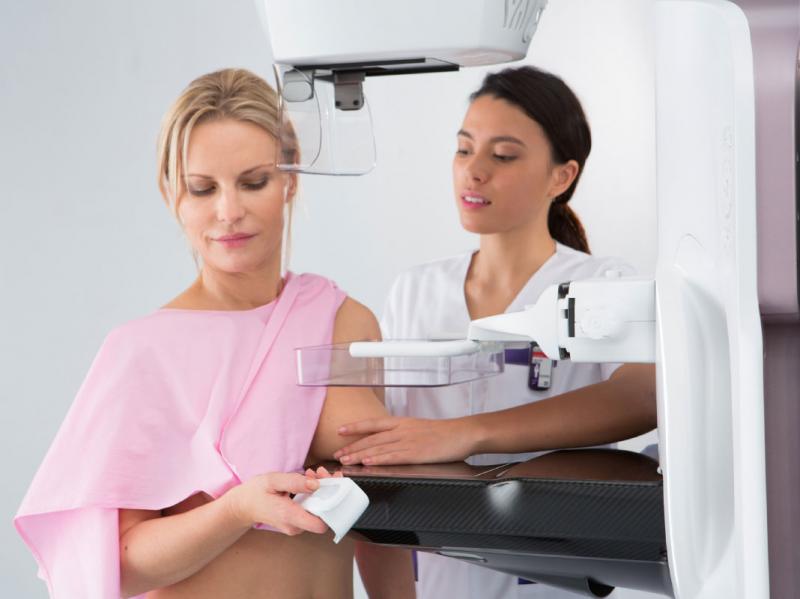
Greg Freiherr has reported on developments in radiology since 1983. He runs the consulting service, The Freiherr Group.
2018 - Year of the Patient

Comfort was the primary driver behind the development and launch by GE Healthcare’s Dueta.
Editor's note: in celebration of the International Day of Radiology on November 8, which will also begin ITN's extensive coverage of RSNA, contributing editor Greg Freiherr continues his coverage with this blog and exclusive podcast.
Commercial developments this year reflect the rising profile of the patient in medical practice. Improvements in patient comfort have been direct contributors. Those involving efficiency and effectiveness have been indirect. The personalization of medicine factored in as well.
Comfort was the primary driver behind the development and launch by GE Healthcare’s Dueta, an option for its digital mammography system, Senographe Pristina. Dueta affords input to breast compression from the women being examined. Efficiency and effectiveness underlie the development of artificial intelligence (AI) programs, exemplified by Siemens’ FAST (Fully Assisting Scanner Technologies). An effort to personalize medicine for the benefit of patients is behind 3-D printing and Philips’ IntelliSpace Portal 10.
Involving Women More In Breast Screening
GE’s Dueta addresses what women have been requesting for a long time — involvement in a part of mammography exams that is among the most disliked. The Dueta technology, which the U.S. Food and Drug Administration (FDA) cleared in the fall of 2017 to work with the company’s digital mammography system, Senographe Pristina, allows women some — but not total — control over the compression of their breasts. The technologist begins the process by positioning the breast and doing the initial compression, then guides the patient to gradually increase pressure (via remote control) until compression reaches an optimal point. According to the company, clinical study has documented that involving women in this process does not negatively impact image quality nor does it significantly increase exam time.
FAST AI Emphasizes Efficiency
In spring 2018, Siemens began promoting in the U.S. its FAST integrated workflow as part of high-end Siemens CT scanners. Hanging above the patient table and integrated into FAST is a 3-D camera that uses AI to guide patient positioning. This camera and its AI software are designed to make positioning precise and consistent; its AI-based automatic nature intended to accelerate the positioning process. FAST is the latest in a string of functionalities designed by Siemens engineers to boost efficiency. Among notable examples are two in MRI — GOKnee3D and GOBrain — designed to accelerate exams of specific body parts; and a family of CT scanners (Somatom.go), which promises to save patient prep time and installation space. Like the Somatom.go family, FAST is designed to streamline technologist tasks while improving the patient experience. Touch panels tied into FAST software and hung on high-end CT gantries allow technologists to leverage AI-based automation while these technologists remain close to the patient during scan prep. Although currently featured for U.S. sale onboard just the flagship dual-source Somatom Force and premium Somatom Edge Plus, FAST and its 3-D camera might be extended to the Somatom Drive, a dual source CT.
3-D Printing Personalizes Medicine
Advances in 3D printing technology have laid the foundation upon which Philips Healthcare has framed its IntelliSpace Portal 10. The company is promoting this platform as the means to construct imaging data in three dimensions, then export those files for 3-D printing. Philips’ stated goal is to “visualize and deliver personalized medicine in the most unique, complex case.” The company recommends working with either 3-D Systems or Stratasys with which it has struck collaborative agreements to provide users with what it describes as “a virtually seamless connection … to expedite 3-D printing.” The printing of 3-D models goes back decades to when CT slices were laboriously transformed into physical aids for diagnosis and training, or even into prosthetics.
The growing emphasis on the patient has breathed new life into making physical 3-D models, as it encourages the continuing development of automation, exemplified by AI, and other patient centric technologies.


 December 17, 2025
December 17, 2025 









